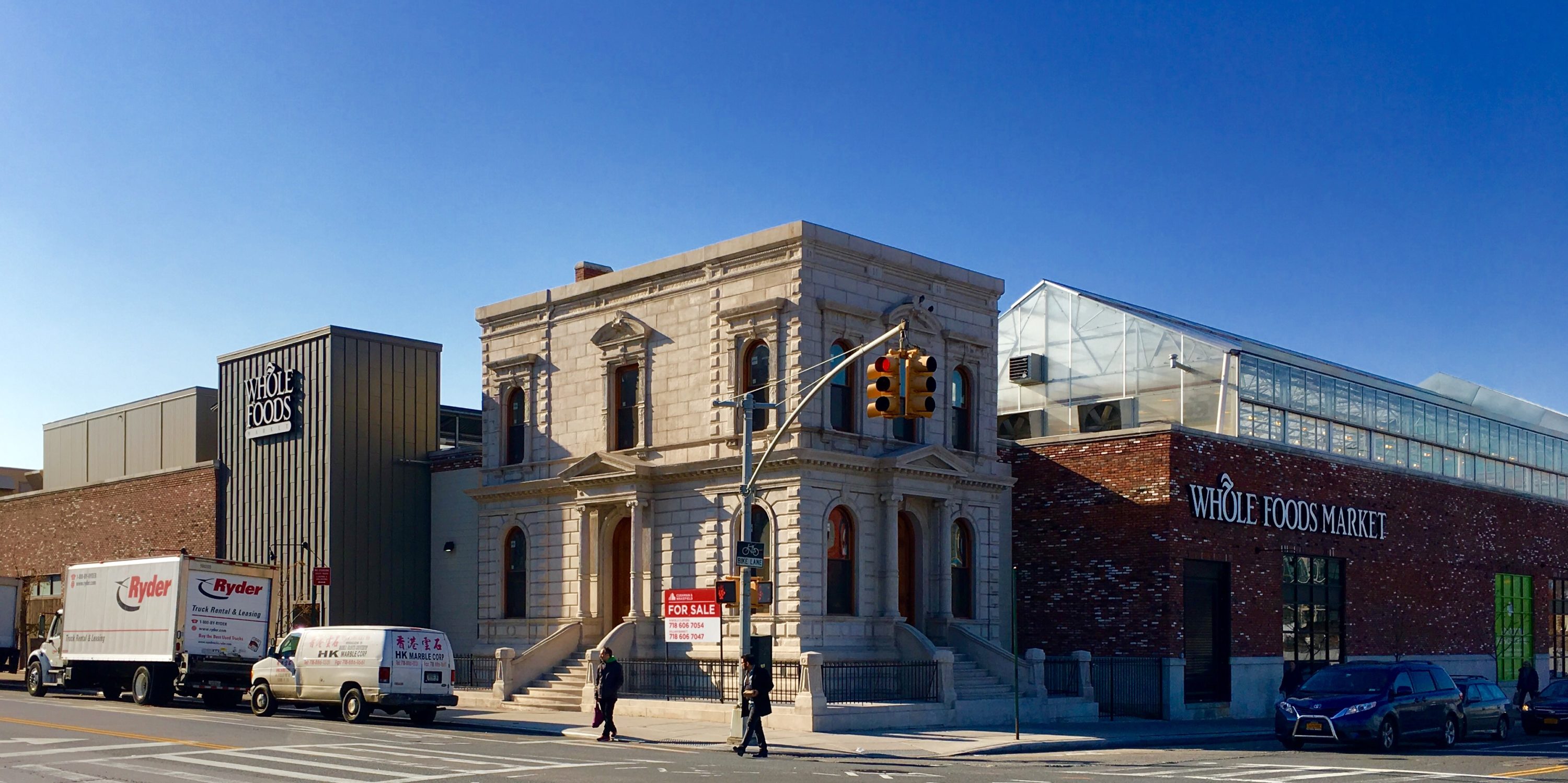A history of the Coignet Building as it re-enters the market
The little landmark surrounded by a huge Whole Foods is for sale again.

For sale, again: The Coignet Building, shown here surrounded by the Gowanus Whole Foods Market. Eagle file photo by Lore Croghan
One of Brooklyn’s quirkiest landmarks is for sale — again.
Hint: It’s a tiny commercial building in Gowanus surrounded by a gigantic grocery store.
It’s the Coignet Building, the oldest concrete building in New York City, now flanked by a 56,000-square-foot Whole Foods Market that’s configured in two wings.
